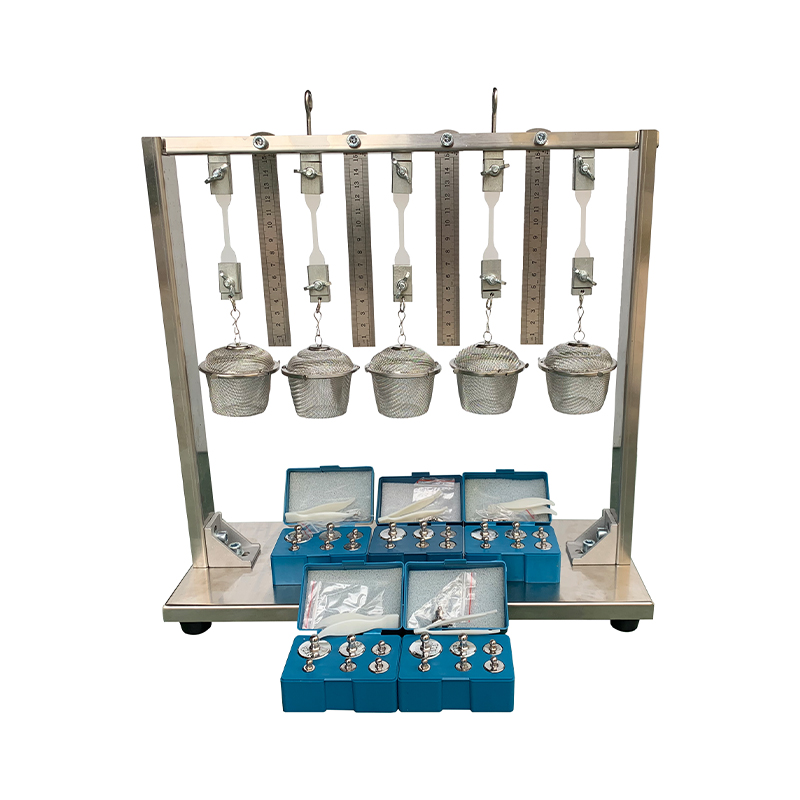Cable Flexibility Testing Equipment Manufacturers for Reliable Performance and Quality Assurance
Innovations in Cable Flexibility Test Machines A Crucial Element for Quality Assurance
In today’s rapidly advancing technological landscape, the demand for high-quality and reliable cables continues to grow exponentially in various industries, including telecommunications, electronics, and automotive manufacturing. As these industries expand, ensuring the durability and flexibility of cables becomes a crucial aspect of the production process. This is where cable flexibility test machines come into play. These machines are specifically designed to assess the flexibility and resilience of cables under different conditions, helping manufacturers maintain high standards of quality and performance.
Importance of Cable Flexibility Testing
Cable flexibility testing is essential for several reasons. Firstly, cables are often exposed to dynamic environments where they must withstand bending, twisting, and flexing without failure. Poorly designed cables can lead to frustrating malfunctions, which may result in downtime, financial losses, or even safety hazards. Secondly, in applications where space is at a premium, such as in robotics or wearable technology, cables need to be not only flexible but also resist wear and tear from repeated movements.
By using cable flexibility test machines, manufacturers can simulate these conditions and measure how well a cable can perform over time. This testing ensures that the products meet stringent safety regulations and performance standards, ultimately leading to greater customer satisfaction and reducing warranty costs for manufacturers.
How Cable Flexibility Test Machines Work
Cable flexibility test machines operate by subjecting cables to controlled bending and flexing motions. These machines often utilize a combination of mechanical and electronic components to create consistent testing environments. The cables are clamped at one end while the other end is moved back and forth in a predetermined cycle. The parameters of the test, including the angle of flexing, frequency, and duration, can be adjusted depending on the specific requirements of the cable being tested.
Modern flexibility test machines are equipped with advanced monitoring systems that can capture real-time data on the cable's performance. This data helps engineers analyze the cable’s capabilities, determining factors like strain resistance and fatigue life. After completion of the tests, the machines provide comprehensive reports that detail the cable’s performance metrics, allowing engineers to make informed decisions regarding production processes and improvements.
cable flexibility test machine company

Advancements in Testing Technology
As technology progresses, so do the capabilities of cable flexibility test machines. Recent advancements have led to the development of fully automated systems that require minimal human intervention. These systems not only enhance efficiency but also improve accuracy in testing results. The integration of AI and machine learning algorithms has also paved the way for predictive modeling, where manufacturers can anticipate potential failures before they occur.
Moreover, innovations in modular designs allow manufacturers to customize testing setups according to the specific types of cables being evaluated. This flexibility in testing configurations ensures that a diverse range of cable types—such as coaxial, fiber optic, or power cables—can be assessed for their unique characteristics.
Challenges and Future Directions
Despite the critical role that cable flexibility test machines play, challenges still remain. One major hurdle is the need for standardization in testing protocols across different industries. Without widely accepted testing standards, comparisons between cable types become difficult and could result in misleading conclusions about performance.
Looking ahead, the future of cable flexibility testing is bright. As the industry leans more towards sustainable practices, there is a growing emphasis on testing cables made from eco-friendly materials. Advancements in smart manufacturing and IoT-enabled machinery will likely lead to real-time monitoring of cable performance even after they have been installed in various applications, allowing for proactive maintenance and energy efficiency improvements.
Conclusion
In conclusion, cable flexibility test machines represent a critical component of the cable manufacturing process. They not only ensure the durability and reliability of cables but also contribute to advancements in technological innovation. As industries continue to evolve, investing in advanced testing solutions will be vital in achieving the high standards of safety and performance that consumers expect. With ongoing innovations and challenges to address, the future of cable flexibility testing is poised for substantial growth and transformation, reinforcing its significance in the modern industrial landscape.
-
Why the Conductor Resistance Constant Temperature Measurement Machine Redefines Precision
NewsJun.20,2025
-
Reliable Testing Starts Here: Why the High Insulation Resistance Measuring Instrument Is a Must-Have
NewsJun.20,2025
-
Flexible Cable Flexing Test Equipment: The Precision Standard for Cable Durability and Performance Testing
NewsJun.20,2025
-
Digital Measurement Projector: Precision Visualization for Modern Manufacturing
NewsJun.20,2025
-
Computer Control Electronic Tensile Tester: Precision and Power for the Modern Metal Industry
NewsJun.20,2025
-
Cable Spark Tester: Your Ultimate Insulation Assurance for Wire and Cable Testing
NewsJun.20,2025
 Copyright © 2025 Hebei Fangyuan Instrument & Equipment Co.,Ltd. All Rights Reserved. Sitemap | Privacy Policy
Copyright © 2025 Hebei Fangyuan Instrument & Equipment Co.,Ltd. All Rights Reserved. Sitemap | Privacy Policy
